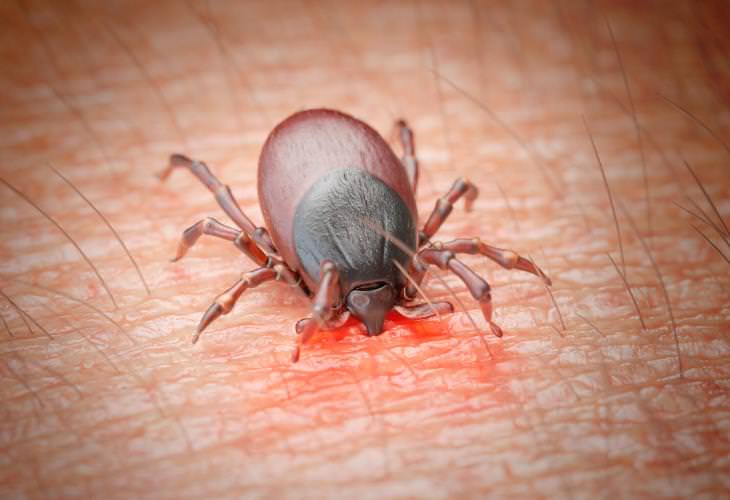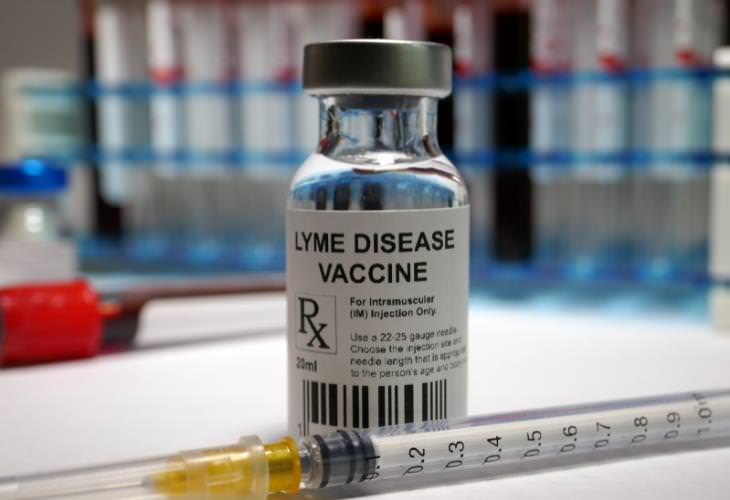Caused primarily by the bacterium Borrelia burgdorferi, the most recognizable sign of the disease is a bull's eye-shaped rash that develops around the bite after a few days. Other symptoms include fever, headache, joint pain, and fatigue. If not treated soon enough, the infection can spread to the joints, heart, and nervous system and cause severe complications. While Lyme disease can be treated with antibiotics, there’s no vaccine to give you extra protection against the most common vector-borne disease in America.
Thankfully, there appears to be some good news on that end. Yale University researchers have recently developed a novel vaccine that has shown promise in preventing the spread of Lyme disease. What’s more, the vaccine may also combat other tick-borne diseases.
How does the vaccine work?
The researchers explain that the saliva of the black-legged tick Ixodes scapularis, which transmits the Lyme disease pathogen Borrelia burgdorferi, contains several proteins. The team focused their research on 19 different varieties. While searching for the basis of the vaccine, Yale researchers and a team from the University of Pennsylvania have analyzed pieces of mRNA that produce all 19 of the saliva proteins. Incidentally, this is a similar approach to that used by the scientists who created the COVID-19 vaccine.
In a series of experiments, they tested the vaccine on guinea pigs bitten by a Lyme disease-carrying tick. All human vaccines directly target pathogens. However, instead of triggering an immune response against a particular pathogen, the new vaccine attacks the tick’s saliva. The study’s authors say that this prompts an immediate skin response to the bite and therefore limits the amount of time the tick has to feed and infect the host.
Lyme disease is not the only illness these insects can carry. There are multiple other tick-borne diseases, and the researchers believe that this approach provides broader protection than a vaccine that targets a specific pathogen. They also feel that this approach can be used together with other traditional, pathogen-based vaccines to increase their effectiveness.
For the trial, the team attached Lyme-ridden ticks on two sets of guinea pigs: one that received the vaccine and the unvaccinated control group. The ticks were removed after the animals began developing inflammation or a rash. They discovered that, unlike the non-immunized group, the vaccinated animals developed an immune reaction - redness at the tick bite area. As long as they removed the ticks right after the redness started, none of the immunized pigs developed Lyme disease. On the other hand, almost half of the control group was found to be infected with B. burgdorferi after the ticks were taken out.
Interestingly, when the investigators placed a single tick to immunized guinea pigs and didn’t remove it, not a single animal was infected. Conversely, 60% of the unvaccinated animals did become infected. Furthermore, the vaccine also prevented the ticks from feeding aggressively on the immunized animals and caused them to dislodge from their skin quicker.
The vaccine does have its limits, however. The researchers found that protection against Lyme disease waned even in immunized animals when three ticks remained attached to the guinea pigs.
In their report published in the journal Science Translational Medicine, the scientists note that this vaccine enhances the ability to recognize a tick bite and partially turns a tick bite into a mosquito bite. “When you feel a mosquito bite, you swat it. With the vaccine, there is redness and likely an itch so you can recognize that you have been bitten and can pull the tick off quickly before it has the ability to transmit B. burgdorferi,” they add.
Will the new vaccine work on humans?
Now, the most important question is – will this novel vaccine provide protection against Lyme disease to humans? The team accepts that this is still an unfinished product, and they need to conduct a few more comprehensive tests before the vaccine can be deemed fit for human trials.
In similar experiments using mice, they discovered that the vaccine was unable to protect against tick-borne infections. According to the study authors, ticks may have found new ways to feed off of mice. Another possibility may be that guinea pig skin, like human skin, has more layers than the skin of mice.
Thus, for now, the vaccine will be going through further animal trials and possible modifications. If the results continue to show promise, human trials can then be started. The signs are positive, and if the vaccine proves to be successful, it will come as a huge relief for countries that regularly suffer from Lyme disease and other tick-borne diseases.
Share this important update with friends and family...



